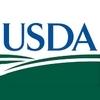Explore all the information on
Poultry gut health
The efficient conversion of feed into its basic components for optimal nutrient absorption is vital for both broiler and broiler breeder production and welfare. Gut health, an intricate and complex area combining nutrition, microbiology, immunology and physiology, has a key role to play. When gut health is compromised, digestion and nutrient absorption are affected which, in turn, can have a detrimental effect on feed conversion leading to economic loss and a greater susceptibility to disease. In addition, recent changes in legislation on the use of antimicrobials, differing feed requirements and more efficient birds highlight the need for a better understanding of gut function and gut health.
INTRODUCTION In South Africa and worldwide, the poultry sector contributes immensely to the global food security status of consumers (1). According to the Food and Agriculture Organization (FAO) (2), the demand for poultry feeds is increasing due to the high growth of commercial and smallholder poultry enterprises. Moreover, in the poultry sector, feed accounts for approximately 60–80% of the total cost (3), with fish and soybean meal used as the main protein sources. However,...
Comments : 0
Recommendations: 1
I. Introduction Immediately after birth, or hatch in birds, the initial inoculum shapes the gut microbiota for life. The first bacteria to settle in the intestine can attach to epithelial cells with no competition, rapidly establish, grow, and set the intestinal environment to suit their own needs (Stecher and Hardt, 2011; Edwards, 2017). The first bacterial settlers have the most substantial influence on developing the host's immune system and overall ability to thrive (Stecher...
Comments : 1
Recommendations: 0
I. INTRODUCTION The following statement was made by Landers et al., (2012) in a public health report. “Although the majority of antibiotic use occurs in agricultural settings, relatively little attention has been paid to how antibiotic use in farm animals contributes to the overall problem of antibiotic resistance”. Some classes of antibiotics are becoming less effective due to overuse and microbial adaptation leading to resistance to treatment. The pool of...
Comments : 0
Recommendations: 0
INTRODUCTION Corn is one of the major components of poultry feed, and up to 65% of finished poultry feed can be comprised of corn and corn byproducts (Alqaisi et al., 2017). Poultry diets are often contaminated with more than one mycotoxin. Fumonisins (FB) and deoxynivalenol (DON) are secondary mycotoxin metabolites produced by Fusarium verticillioides and Fusarium graminearum, respectively (Glenn, 2007). According to the 2021 survey by Biomin, FB and DON are the most prevalent...
Comments : 0
Recommendations: 0
Amanda Cobucci, Techno-Commercial Manager at Proteon LATAM, speaks about how bacteriophages modulate the microbiome to improve animal health...
Comments : 3
Recommendations: 4
1. Introduction The use of antibiotics growth promoters (AGPs) has been a common practice in intensive poultry production to improve animal growth performance, health, and sustainability of animal farming (1). However, AGPs threaten human health due to the risk of developing antimicrobial resistance and drug residue in poultry products (2). Consequently, AGPs have been prohibited in several countries, including the European Union, the United States, and China. However, AGPs...
Comments : 0
Recommendations: 0
.jpg&w=3840&q=75)

Sustainability: Advanced Lysine source beneficial for farm animals and the environment
Suggested link
INTRODUCTION Campylobacteriosis is among the most frequently reported bacterial foodborne infection in both the European Union (EU) and the United States, with Campylobacter jejuni as the major causative agent. In the last decade, the number of confirmed infections in the EU exceeded 200,000/year. Symptoms of campylobacteriosis include diarrhea, fever and cramps. Death rarely occurs, but complications can increase more than fivefold due to infections with antibiotic-resistant...
Comments : 0
Recommendations: 0
Joginder Singh Uppal, Regional Business Director, points out how Bacteriophages are an innovation for a better future...
Comments : 4
Recommendations: 0
In a bid to enhance animal health and nutrition for sustainable food security in Sub-Saharan Africa, Livestock Industry Foundation for Africa (LIFA), with the support of the Zoetis Foundation, orchestrated a groundbreaking initiative in West Africa titled “Knowledge Update on Poultry Health and Nutrition.” This transformative program aimed to impart critical knowledge and skills to enhance poultry health practices in the region.
Spanning two significant sessions held on...
Comments : 0
Recommendations: 1
Proteon Pharmaceuticals modulates the microbiome to improve animal health. Our products allow farmers to reduce the need to use antibiotics, enable more sustainable agriculture, improve food safety/quality and increase productivity by eliminating on-farm animal health challenges....
Comments : 8
Recommendations: 3
A roundtable featuring Mike Kogut (USDA), Annelies Kers (Utrecht University), Monika Proszkowiec-Weglarz (USDA) and Tim Johnson (University of Minnesota) starts an open discussion on how to agree on standard procedures for microbiome analysis, during the 11th Symposium on Gut Health in Production of Food Animals in St. Louis, USA....
Comments : 4
Recommendations: 3
Mike Kogut, Chair of the Organizing Committee, talks about the meeting's most interesting discussions and announces the dates for the next edition....
Comments : 2
Recommendations: 3
.jpg&w=3840&q=75)

Transforming Poultry Farming in India with Srinivasa Farms and Hy-Line
Suggested link
INTRODUCTION Livestock monogastric species, including swine and poultry, are the main sources of meat; therefore, they are, at the same time, the main livestock species reared under intensive conditions (Eurostat, 2022). The pressure to increasingly optimize breeding resulted in antimicrobials often being used for both prophylactic and metaphylactic purposes to counteract the diseases of these animals or as growth promoters. It is currently commonly recognized that the misuse of...
Comments : 1
Recommendations: 0
Annelies Kers (Utrecht University) Knowledge of factors that influence the functioning of gut microbes is essential to improve health and reduce the use of antibiotics in poultry production. The environment, and more specifically housing conditions, can affect the gut microbiome of broiler chickens. The gut microbiome is defined as the collection of all the microorganisms and their “theatre of activity” in the gut environment. Previous...
Comments : 0
Recommendations: 0
Theresia Lavergne (Natural Biologics) To produce resilient and healthy poultry, it is necessary to understand the effects of diet and dietary feed additives on the microbiome and its development. This trial was conducted to evaluate the microbiota of broilers 14, 28, and 42 d of age, while feeding them a combination of yeast postbiotics and fermentation extracts (Provillus 4Poultry). A total of 300 Ross 308 male chicks were allotted to 2 treatments:...
Comments : 0
Recommendations: 2
Kostas Mountzouris (Agricultural University of Athens) A deeper understanding of critical bird homeostasis responses may augment poultry industry efforts for improved bird resilience and production sustainability. The aim of this work was to explore the expression range of critical genes in the broiler gut as responses to diverse dietary inputs. The gene transcripts studied were grouped based on their functional role under functional indices, termed...
Comments : 0
Recommendations: 1
Mueez Ahmad (Arm & Hammer) Enterococcus faecalis is considered a normal inhabitant of the poultry gastrointestinal tract. Although it has been known to be an opportunistic poultry pathogen, high levels of this organism can be recovered from the intestinal tract of normal, healthy birds with no known disease issues. More recently, an increasing number of poultry veterinarians and diagnostic laboratories have been reporting that E. faecalis is...
Comments : 0
Recommendations: 0
Ioannis Brouklogiannis (Agricultural University of Athens) This study was conducted to investigate the inclusion level effects of a natural phytogenic blend (PB) on production performance, egg quality, and underlying detoxification (aryl hydrocarbon receptor; AhR), antioxidant (nuclear factor erythroid 2-related factor 2; Nrf2) and inflammatory (nuclear factor-kappa B; NFκB) responses in layers’ duodena and ceca. Depending on PB...
Comments : 0
Recommendations: 0
The objective of the study was to evaluate tryptophan’s functionally essential role in regulating performance, intestinal inflammation, and disease resistance during a coccidia challenge. A total of 300 two-day-old Cobb 500 broiler chickens (54.29 ± 0.284 g body weight [BW]) were group housed (5 chickens/pen; 10 pens/treatment) in battery brooders and had ad libitum access to a basal diet and water. At 7 d of age, pens were randomly assigned to 1 of 6 levels of dietary...
Comments : 0
Recommendations: 0
Christos Gougoulias (Innovad) Modern poultry broiler production strives for the maximum live weight, which can contribute to chronic intestinal inflammation and broader metabolic syndromes. There is thus a need to establish realistic models that help the industry. Several challenge models have been proposed by the scientific community and these include biological agents or pathogens, chemicals, reused litter, and, more recently, different non-starch...
Comments : 0
Recommendations: 1




.jpg&w=3840&q=75)














.jpg&w=3840&q=75)


.jpg&w=3840&q=75)

.jpg&w=3840&q=75)

.jpg&w=3840&q=75)
.jpg&w=3840&q=75)


.jpg&w=3840&q=75)






